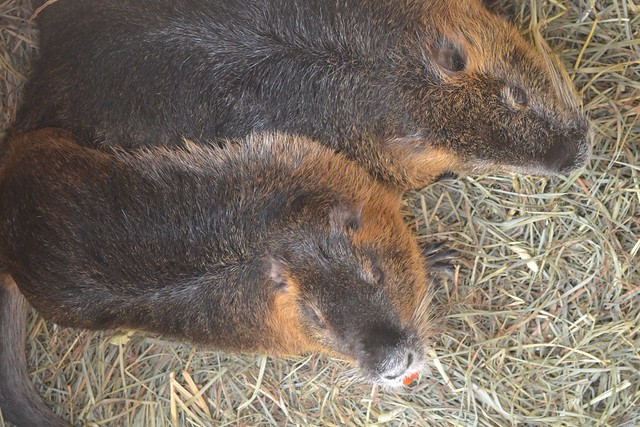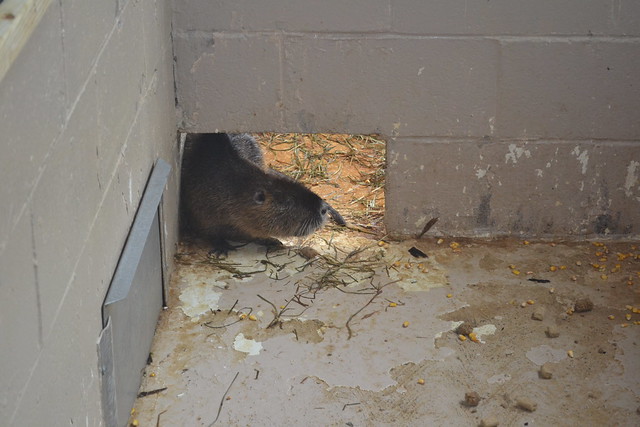
Word has it that legendary actress Greta Garbo could be seen wearing nutria fur coats back in the day, and nutria fur coats can still be found in vintage clothing stores around the world. Nutria, sometimes called swamp rats, were first introduced into the United States in the 1800s to be used in the fur trade. However, when the fur trade collapsed in the mid 1900’s thousands of nutria were released by ranchers who could no longer afford to feed and care for them. This invasive rodent, about half the size of a beaver, damages wetland ecosystems by eating away at their delicate vegetation. Nutria have since been found in at least 20 states.
Maryland’s eastern shore has seen thousands of acres of protective marshland impacted by their destructive feeding habits. To protect the valuable resources of Maryland’s Chesapeake Bay, The Chesapeake Bay Nutria Eradication Project (CBNEP) began in 2002 to permanently remove invasive nutria from the marshes of the Delmarva Peninsula and to protect, enhance, and restore the aquatic and river ecosystems they damaged.

The U.S. Fish and Wildlife Services’ (USFWS) Chesapeake Bay Field Office Coastal Program and Chesapeake Marshlands National Wildlife Refuge Complex administer the project, which is funded through the USFWS’ Partners for Fish and Wildlife and Refuge programs. The U.S. Department of Agriculture’s (USDA) Wildlife Services program performs the nutria eradication work through an interagency agreement with the USFWS. Other partners in the project include the Maryland Department of Natural Resources, Virginia Department of Game and Inland Fisheries, Delaware Division of Natural Resources and Environmental Control, and Tudor Farms. CBNEP’s work has led to the removal of nearly 14,000 nutria, almost half from private lands.
With the voluntary cooperation of both public and private landowners, the CBNEP employs multiple techniques as they work through the stages of eradication: conducting surveys to understand the extent of the population; removing the invasive rodents; verifying that that the nutria are gone; and finally, conducting long-term monitoring to prevent re-infestation. Eradication tools include ground surveys, shoreline or boat surveys, trail cameras, monitoring platforms, hair snares, and reports from the public.
Wildlife Services also looks to innovative and new ways to search for this rodent – trained detector dogs sniff out nutria scat or excrement. Since the start of this innovative program, 6 nutria dogs have been trained – the most recent one, Bradie, completed training with her instructor, Wildlife Biologist Trevor Michaels, in May.
Nutria haven’t been detected in the Delmarva Peninsula in 3 years and the program is now in the verification phase. This phase is critical as most eradication efforts fail when they end before the task is fully complete. Long term monitoring should begin by 2020.
While this is good news for Delmarva, other parts of the country have recently discovered nutria thought long eradicated. Nutria have been discovered in the wetlands, rivers, canals and other fresh water habitats in six counties in California. Wildlife Services is working closely with the state’s lead agency, the California Department of Fish and Wildlife, to respond to this emerging issue with best practices learned from our experience on Maryland’s Eastern shore.



